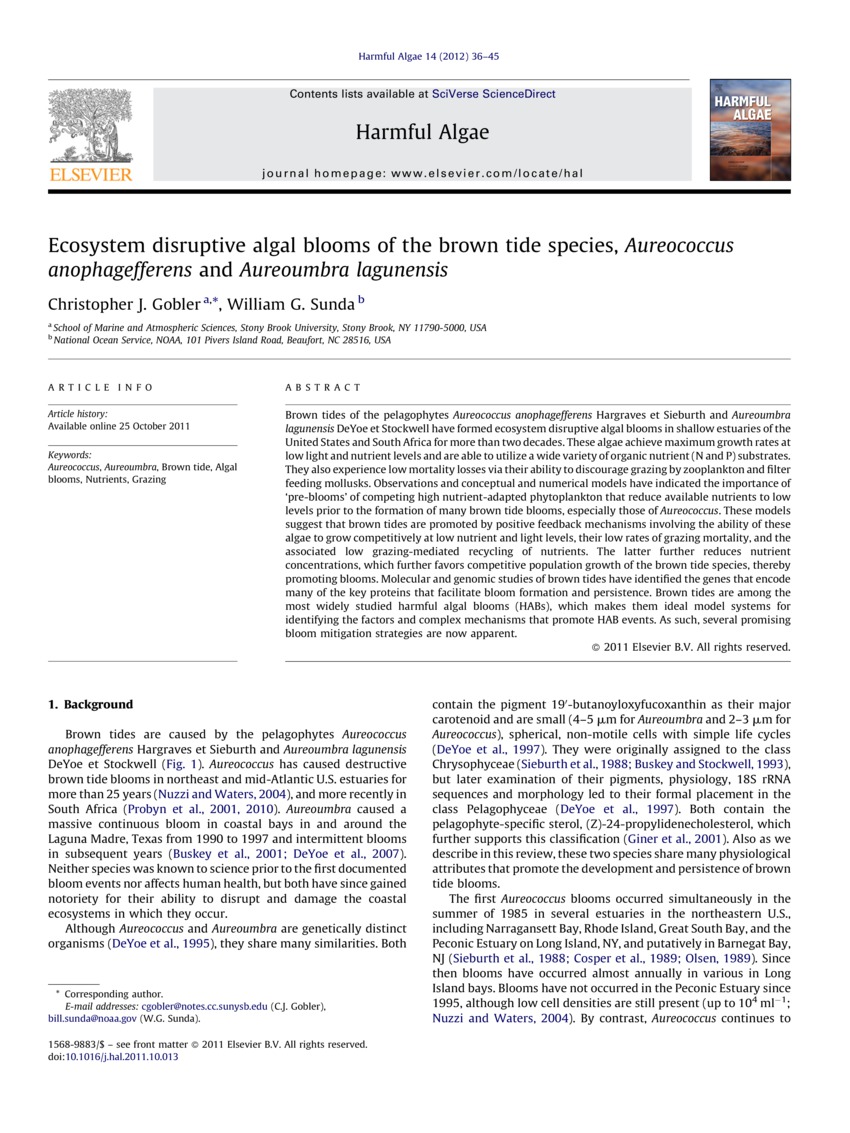Journal Article
AccessEcosystem Disruptive Algal Blooms of the Brown Tide Species, Aureococcus anophagefferens and Aureoumbra lagunensis
Brown tides of the pelagophytes Aureococcus anophagefferens Hargraves et Sieburth and Aureoumbra lagunensis DeYoe et Stockwell have formed ecosystem disruptive algal blooms in shallow estuaries of the United States and South Africa for more than two decades. These algae achieve maximum growth rates at low light and nutrient levels and are able to utilize a wide variety of organic nutrient (N and P) substrates. They also experience low mortality losses via their ability to discourage grazing by zooplankton and filter feeding mollusks. Observations and conceptual and numerical models have indicated the importance of ‘pre-blooms’ of competing high nutrient-adapted phytoplankton that reduce available nutrients to low levels prior to the formation of many brown tide blooms, especially those of Aureococcus. These models suggest that brown tides are promoted by positive feedback mechanisms involving the ability of these algae to grow competitively at low nutrient and light levels, their low rates of grazing mortality, and the associated low grazing-mediated recycling of nutrients. The latter further reduces nutrient concentrations, which further favors competitive population growth of the brown tide species, thereby promoting blooms. Molecular and genomic studies of brown tides have identified the genes that encode many of the key proteins that facilitate bloom formation and persistence. Brown tides are among the most widely studied harmful algal blooms (HABs), which makes them ideal model systems for identifying the factors and complex mechanisms that promote HAB events. As such, several promising bloom mitigation strategies are now apparent.
Publisher - Elsevier
Subjects - Algal Bloom; Brown Tide; Algae, Aureococcus anophagefferens; Algae, Aureoumbra lagunensis
Collection: Section 2: Water Quality (2014)
Citation: Gobler CJ, Sunda WG. 2012. Ecosystem Disruptive Algal Blooms of the Brown Tide Species, Aureococcus anophagefferens and Aureoumbra lagunensis. Harmful Algae; 14:36-45 http://dx.doi.org/10.1016/j.hal.2011.10.01
